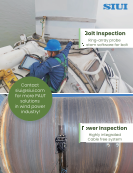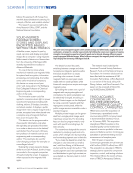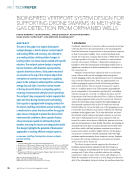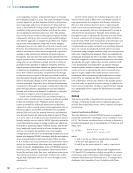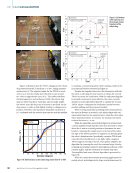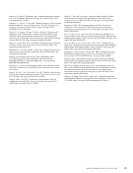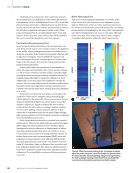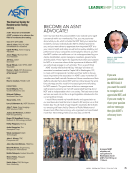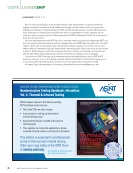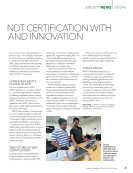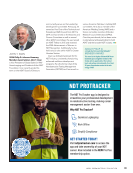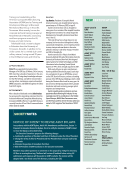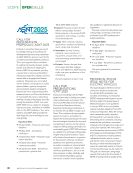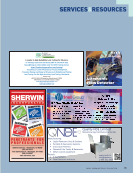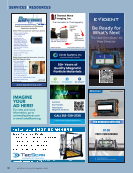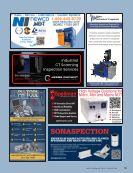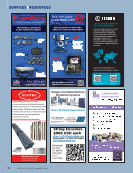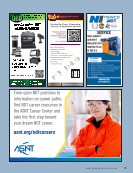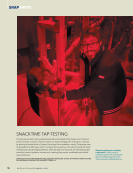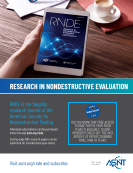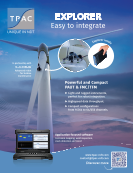task itself is carried out by drones equipped with appropriate
sensing technologies. The vertiport facilitates these missions by
providing a reliable infrastructure for drone storage, charging,
and precise landing in remote or challenging environments.
The concepts of smart cities and drone vertiports are closely
related, as various maintenance operations in smart cities can
be carried out using the autonomous drone vertiport system,
reducing the need for human involvement, saving time, and
lowering costs. This system is fully autonomous and powered
by solar energy. The vertiports are designed to resemble
tree-like structures, inspired by nature, where the drones are
housed in capsules that function like tree branches, providing
protection and maintenance for the drones [12].
The rest of the paper is organized as follows: Section 2
explores the role of drones in smart cities and their potential
applications. Section 3 discusses the design of drone vertiports,
including considerations for support systems. Section 4 focuses
on the structural analysis of the drone vertiport. Section 5
examines power supply solutions for the drone vertiport.
Section 6 delves into the integration of drones with vertiports,
including precision landing techniques. Section 7 outlines
future work and development areas. Finally, Section 8 presents
the conclusions.
2. Smart Cities and Drones
The rising interest in drones for urban operations has led to
significant investments due to their versatility and efficiency in
tasks like traffic monitoring, parcel delivery, and farmland irri-
gation [13–22]. In smart cities, drones assist with surveillance,
emergency responses, and firefighting, while in towns and
villages, they are used for crop irrigation and livestock monitor-
ing, showcasing their adaptability to diverse environments [6].
Beyond agriculture and recreational markets, drones are
now employed in industrial site evaluations, hazard identi-
fication, structural health monitoring, wildlife surveys, and
atmospheric analysis, emphasizing their role in environmental
monitoring [23–27]. Additionally, drones carrying emergency
equipment, such as defibrillators and fire-extinguishing can-
isters, have proven effective in lifesaving and first-responder
operations [28, 29].
Drones are increasingly being integrated into goods
delivery systems, with companies like Alphabet and Amazon
leading the way. Regulatory frameworks such as the US
FAA’s Part 135 Air Carrier Certification and UTM (Unmanned
Aircraft System Traffic Management) framework are critical
for ensuring safe and efficient operations in urban airspaces
[30–36]. While these regulations primarily focus on drone
operations in populated areas, they also emphasize the
importance of reliable infrastructure, such as vertiports, to
support autonomous drone missions. Our vertiport design
aligns with these regulatory requirements by providing a
robust and safe system for drone storage, charging, and
precise landing, enabling compliance with emerging urban
airspace management standards.
2.1. Drone Support and Vertiports
Recent advancements in wired and wireless charging systems
have enabled drones to recharge autonomously. Wired
systems, such as contact-based charging pads, and wireless
methods, including inductive power transfer and resonant
coupling, eliminate the need for manual intervention [37–39].
Nesting stations like SkyX’s xStation and Volatus Aerospace’s
AeriePort extend drone range by providing temporary housing,
charging, and telemetry for operations spanning hundreds
of miles. These stations also mitigate the impact of adverse
weather and GPS limitations by guiding drones to safe loca-
tions [40, 41].
The current state of drone infrastructure is largely focused
on singular hangars, which are designed to support individual
drones. While effective for limited operations, these designs
lack scalability and efficiency, especially in high-traffic environ-
ments such as smart cities or remote locations requiring large-
scale drone deployments. In this paper, we aim to address this
limitation by developing a bioinspired vertiport system capable
of supporting multiple drones simultaneously. This approach
not only optimizes space utilization but also enhances the
operational efficiency of autonomous drone systems. Urban
environments, however, require innovative solutions due to
limited real estate and high drone traffic. Approaches like
resonant wireless power systems and high-powered lasers
have shown potential but are still in developmental stages [42,
43]. Companies like Amazon and DJI have proposed using
existing urban infrastructure, such as lampposts and rooftops,
for drone docking and charging, enabling scalable operations
in densely populated areas [44–45]. Independent companies
like SkyX, Volatus Aerospace, Matternet, Heisha, Hextronics,
and Skycharge are also developing autonomous charging
stations that serve both housing and communication purposes.
Additionally, the development of larger, multi-drone hubs
could provide significant benefits in smart cities by optimizing
space and supporting high-volume operations [46–50].
2.2. Bioinspired Drone Vertiports
Nature offers innovative inspirations for drone vertiport
designs, such as blooming flowers, bird nests, and paper wasp
nests, to address challenges like environmental protection,
modularity, and scalability [12]. Flower-inspired designs use
petal-like capsules to encapsulate drones, providing protec-
tion from the elements and interference. Similarly, water lilies
inspire floating vertiports like FlyOnE’s Lilypad Elevate™, which
could serve coastal or aquatic operations, although these
open-top designs may be less effective at protecting drones
from harsh weather conditions [51, 52]. Mobile stations inspired
by carrion beetles can combine drones with unmanned
ground vehicles (UGVs) for tasks like delivering packages or
accessing challenging terrains, but their open structure may
also expose drones to environmental elements [53]. Bird nest–
inspired designs elevate drones above ground-level activity,
making them ideal for urban recharging hubs while provid-
ing some degree of weather protection. In contrast, paper
A P R I L 2 0 2 5 • M AT E R I A L S E V A L U AT I O N 37
sensing technologies. The vertiport facilitates these missions by
providing a reliable infrastructure for drone storage, charging,
and precise landing in remote or challenging environments.
The concepts of smart cities and drone vertiports are closely
related, as various maintenance operations in smart cities can
be carried out using the autonomous drone vertiport system,
reducing the need for human involvement, saving time, and
lowering costs. This system is fully autonomous and powered
by solar energy. The vertiports are designed to resemble
tree-like structures, inspired by nature, where the drones are
housed in capsules that function like tree branches, providing
protection and maintenance for the drones [12].
The rest of the paper is organized as follows: Section 2
explores the role of drones in smart cities and their potential
applications. Section 3 discusses the design of drone vertiports,
including considerations for support systems. Section 4 focuses
on the structural analysis of the drone vertiport. Section 5
examines power supply solutions for the drone vertiport.
Section 6 delves into the integration of drones with vertiports,
including precision landing techniques. Section 7 outlines
future work and development areas. Finally, Section 8 presents
the conclusions.
2. Smart Cities and Drones
The rising interest in drones for urban operations has led to
significant investments due to their versatility and efficiency in
tasks like traffic monitoring, parcel delivery, and farmland irri-
gation [13–22]. In smart cities, drones assist with surveillance,
emergency responses, and firefighting, while in towns and
villages, they are used for crop irrigation and livestock monitor-
ing, showcasing their adaptability to diverse environments [6].
Beyond agriculture and recreational markets, drones are
now employed in industrial site evaluations, hazard identi-
fication, structural health monitoring, wildlife surveys, and
atmospheric analysis, emphasizing their role in environmental
monitoring [23–27]. Additionally, drones carrying emergency
equipment, such as defibrillators and fire-extinguishing can-
isters, have proven effective in lifesaving and first-responder
operations [28, 29].
Drones are increasingly being integrated into goods
delivery systems, with companies like Alphabet and Amazon
leading the way. Regulatory frameworks such as the US
FAA’s Part 135 Air Carrier Certification and UTM (Unmanned
Aircraft System Traffic Management) framework are critical
for ensuring safe and efficient operations in urban airspaces
[30–36]. While these regulations primarily focus on drone
operations in populated areas, they also emphasize the
importance of reliable infrastructure, such as vertiports, to
support autonomous drone missions. Our vertiport design
aligns with these regulatory requirements by providing a
robust and safe system for drone storage, charging, and
precise landing, enabling compliance with emerging urban
airspace management standards.
2.1. Drone Support and Vertiports
Recent advancements in wired and wireless charging systems
have enabled drones to recharge autonomously. Wired
systems, such as contact-based charging pads, and wireless
methods, including inductive power transfer and resonant
coupling, eliminate the need for manual intervention [37–39].
Nesting stations like SkyX’s xStation and Volatus Aerospace’s
AeriePort extend drone range by providing temporary housing,
charging, and telemetry for operations spanning hundreds
of miles. These stations also mitigate the impact of adverse
weather and GPS limitations by guiding drones to safe loca-
tions [40, 41].
The current state of drone infrastructure is largely focused
on singular hangars, which are designed to support individual
drones. While effective for limited operations, these designs
lack scalability and efficiency, especially in high-traffic environ-
ments such as smart cities or remote locations requiring large-
scale drone deployments. In this paper, we aim to address this
limitation by developing a bioinspired vertiport system capable
of supporting multiple drones simultaneously. This approach
not only optimizes space utilization but also enhances the
operational efficiency of autonomous drone systems. Urban
environments, however, require innovative solutions due to
limited real estate and high drone traffic. Approaches like
resonant wireless power systems and high-powered lasers
have shown potential but are still in developmental stages [42,
43]. Companies like Amazon and DJI have proposed using
existing urban infrastructure, such as lampposts and rooftops,
for drone docking and charging, enabling scalable operations
in densely populated areas [44–45]. Independent companies
like SkyX, Volatus Aerospace, Matternet, Heisha, Hextronics,
and Skycharge are also developing autonomous charging
stations that serve both housing and communication purposes.
Additionally, the development of larger, multi-drone hubs
could provide significant benefits in smart cities by optimizing
space and supporting high-volume operations [46–50].
2.2. Bioinspired Drone Vertiports
Nature offers innovative inspirations for drone vertiport
designs, such as blooming flowers, bird nests, and paper wasp
nests, to address challenges like environmental protection,
modularity, and scalability [12]. Flower-inspired designs use
petal-like capsules to encapsulate drones, providing protec-
tion from the elements and interference. Similarly, water lilies
inspire floating vertiports like FlyOnE’s Lilypad Elevate™, which
could serve coastal or aquatic operations, although these
open-top designs may be less effective at protecting drones
from harsh weather conditions [51, 52]. Mobile stations inspired
by carrion beetles can combine drones with unmanned
ground vehicles (UGVs) for tasks like delivering packages or
accessing challenging terrains, but their open structure may
also expose drones to environmental elements [53]. Bird nest–
inspired designs elevate drones above ground-level activity,
making them ideal for urban recharging hubs while provid-
ing some degree of weather protection. In contrast, paper
A P R I L 2 0 2 5 • M AT E R I A L S E V A L U AT I O N 37





